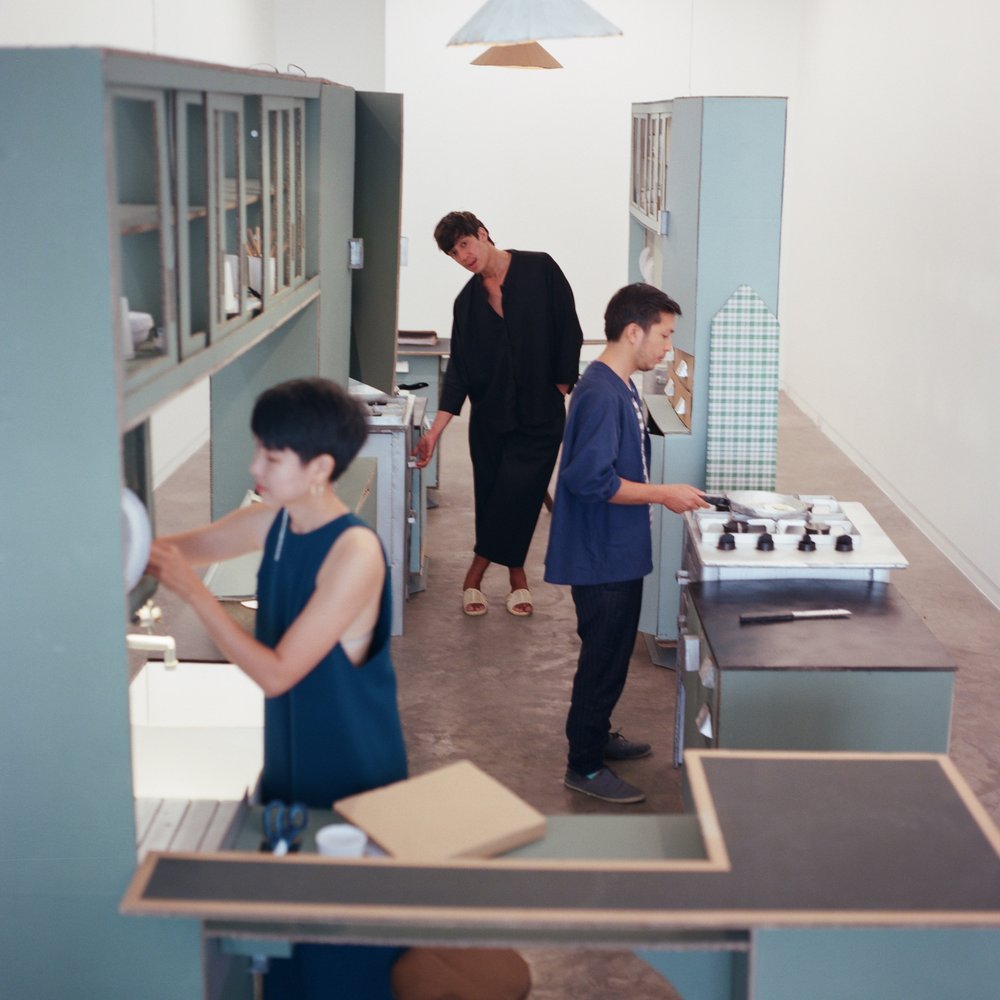Mimi Salibio
Moving away from binary thought
By Vivyan Yeo
With ethereal embroidered landscapes, maze-like grids rendered in graphite and latex, an absurdist video performance about harvesting fish from a tree, and a sculpture of a crab submerged in cement, Filipino artist Mimi Salibio (b. 1991) uses a vast array of materials to explore enigmatic tensions. Her works pair polarising materials and themes, revealing new perspectives about everyday objects.
Salibio graduated from Far Eastern University in Manila with a BA in Fine Arts and a major in Painting in 2012. She is currently pursuing an MA in Fine Arts at the University of Philippines Diliman. Since 2015, she has had several solo presentations, including ‘Sero’ (2019) at Art Underground Manila, ‘Squares and Quadrilaterals’ (2020) at White Walls Gallery and ‘Softest Gravel’ (2022) at Art Fair Philippines by Art Underground Manila.
Mimi Salibio, sculpture from series ‘Imagined Seas’, 2019, 15.2 x 7.6 x 5cm, cement and crustacean shell. Image courtesy of the artist.
Salibio’s ‘Imagined Seas’ (2019) features a series of fifty small sculptures that juxtapose crustacean shells and seashells with cement blocks. Engulfed in the industrial material, the shells appear like relics found during an archaeological excavation. The use of unconventional materials aligns with one of the artist’s key influences: the Italian art movement arte povera. Beginning in the late 1960s, the movement privileged the use of humble everyday materials to disrupt the commercialisation of art and critique the industrialisation of Italy at the time. Utilising organic and synthetic materials, Salibio’s works, too, hint at the jarring disconnect between rural and urban communities.
Mimi Salibio, ‘Requiem’, 2020, 121.9 x 121.9cm, graphite, latex, acrylic and canvas.
Another series that examines industrialisation is ‘Squares and Quadrilaterals’ (2020). In these works, the grid motif reigns supreme. Geometric shapes fit neatly into each other to form perfect square canvases, creating an inescapable structure. According to Salibio’s exhibition statement at White Walls Gallery, the grid has given rise to the rapid development of infrastructure and transformed forests into cities. Indeed, the grid brings organisational tools such as maps, blueprints and excel sheets to mind; it has become an undeniable part of urban life, and one that simultaneously aids civilisation and generates a widespread sense of anxiety.
Mimi Salibio, ‘Climax’, 2022, 91.4 x 60.9cm, thread, canvas and fabric dye. Image courtesy of the artist and Art Underground Manila.
In her solo exhibition, ‘Softest Gravel’, Salibio presented transcendental landscapes through a series of textile works. At a glance, their visual elements appear familiar, suggesting forms of vegetation, birds, fruits and raindrops. However, upon closer viewing, these organic shapes betray our initial associations and create a new unindustrialised world. Their ambiguity echoes in the oxymoronic title, ‘Softest Gravel’, which is difficult to picture. Whether in words, materials or themes, Salibio’s signature use of oppositions encourages us to embrace contradictions and move away from binary thinking.
Click here to read our dialogue with Mimi Salibio.





